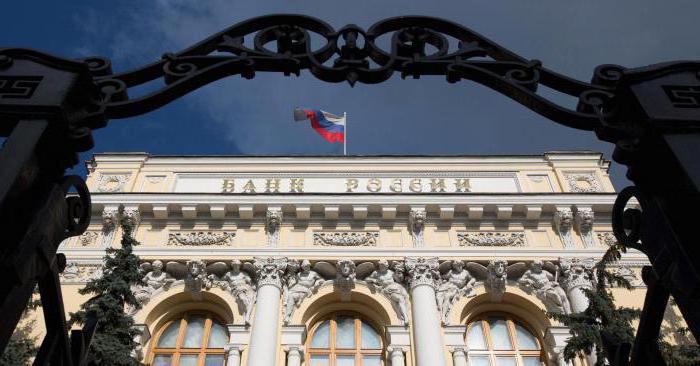In the Russian Federation, the banking system is represented by Central and commercial banks, as well as other non-bank credit organizations. We can say that the banking system of the Russian Federation is two-tier. The upper level is represented by the Central Bank, and the lower level by all the others.
Central Bank of the Russian Federation
The Central Bank of Russia is the largest bank operating in Russia. He is a subject of monetary regulation. Its goals and objectives are regulated at the level of the Constitution and federal legislation.

All banks can be divided into two categories: issuing banks, which are the Central Bank, and commercial banks. A feature of an issue bank is that it has the right to issue national currency units, as well as regulate the circulation of funds in Russia.
Commercial banks
This category of banks includes credit institutions that are created to serve legal entities and individuals, giving them the opportunity to conduct various financial transactions. Banks attract deposits, provide loans, and also carry out settlement, payment and intermediary operations. In addition, commercial banks participate in stock and bond market transactions.
Commercial banks and the Central Bank differ in that the goal of the former is to make a profit. Bank profit is called margin. It is calculated as the difference between the interest rate on loans issued by the bank and the interest rate on deposits.
Services provided by commercial type banks
The adjective "commercial" indicates that the bank was created to make a profit. But there are also banks that specialize more in the provision of certain banking services.

The most common services provided by commercial banks are as follows:
- loans to individuals and legal entities;
- conducting currency transactions;
- car loans;
- mortgage;
- exchange of damaged notes for unsorted;
- creation and maintenance of settlement accounts for economic entities;
- operations with precious metals.
Tasks and goals of financial institutions
The tasks of the Central and commercial banks are different. The Bank of Russia works in three main areas. Firstly, he should try to maintain the stable functioning of the banking system, and also try to reduce the rate of decline in liquidity of the entire banking system in the country as much as possible. Secondly, the Central Bank of Russia should ensure the reliability and efficiency of the entire payment system. The third task of the Central Bank is to maintain the purchasing power of the ruble, as well as maintaining a stable exchange rate.
At the moment, the Russian government has established a floating ruble exchange rate regime. Earlier, the Central Bank tried to maintain the national currency due to the targeted impact on the foreign exchange market.

Unlike various non-bank credit institutions and commercial banks, the Central Bank does not pursue any commercial goals in the course of its activities. The Bank of Russia is responsible for the development of the financial market in the Russian Federation, and also ensures its stability. Making a profit is not his main goal.This is the main difference between commercial banks and the Central Bank of the Russian Federation.
The value of commercial banks
As mentioned earlier, the main objective of the operational activities of commercial banks is to make a profit. This is precisely their commercial interest. A commercial bank can be created on the basis of any form of ownership and is a business company.
In today's economy, commercial banks play an important role. They are intermediaries and carry out the distribution of capital between sectors and regions of the state. One of the main tasks of commercial banks is to ensure uninterrupted circulation of cash and capital in the state. Also, this category of banks is responsible for providing loans to industrial enterprises, the state and the population. In addition, commercial banks create the conditions for the accumulation of funds of organizations and citizens.
Central Bank Functions
For the reason that commercial banks and the Central Bank pursue different goals in their activities, their functions also differ. To solve the tasks set for the Central Bank, it performs the following functions:
- storage of gold and foreign exchange reserves;
- accumulation and storage of reserves of credit organizations;
- control over credit institutions;
- issue of credit funds;
- loans to commercial banks;
- monetary regulation of the economy.
In order to perform these functions, there are many methods. The Bank of Russia has the right to change the norms of required reserves of banks and carry out market operations. Such operations include the acquisition and sale of government bonds, bills and other securities.
Also, the Central Bank has the right to change the size of credit rates. This task is being implemented as part of credit regulation. Another important area of activity is the development of exchange rate policies. All of the above methods are commonly called general, since they affect the activities of all commercial banks, as well as the credit capital market.
In addition to general methods, selective ones are also distinguished. Their application is aimed at regulating certain types of loans (annuity or consumer, for example). These methods may also focus on providing loans to a variety of industries.
Examples of selective methods are credit ceilings (limits), which are a direct restriction on the size of loans that can be provided by certain banks in the Russian Federation. The second example of selective methods is the regulation of the conditions under which certain types of loans are issued. The central bank may set the difference between interest rates on loans and deposits.

"Bank of banks"
The Central Bank does not cooperate with entrepreneurs and the population of the Russian Federation. Its main clients are commercial banks, which are intermediaries between the Central Bank of the Russian Federation and economic entities.
The central bank keeps cash from commercial banks. This money is called reserves. Historically, reserves were intended to repay deposits. The minimum reserve amount in relation to the amount of deposit obligations is established by the Bank of Russia.
Being a "bank of banks", the Central Bank of the Russian Federation is the body that provides regulation of the entire payment system in Russia. Under his responsibility is the creation and organization of interbank settlements, coordination and regulation of settlement systems. The Central Bank is the center of the entire banking system of the Russian Federation.
Functions of Commercial Banks
The main functions of the Central Bank and commercial banks are significantly different.If the work of the Central Bank is more regulatory in nature, the activities of commercial banks are associated with the redistribution of monetary resources and the stimulation of savings.
The main function is to mediate loans. The Bank is engaged in the redistribution of money that can be released in the process of turnover of capital of enterprises and private income. The redistribution of funds is carried out horizontally, that is, from the lender to the borrower. There are no intermediaries in this area. Payment for the use of capital is established under the influence of supply and demand.

The second function of commercial banks is to stimulate the creation of savings in the economy. In theory, it is the funds of commercial banks that should make up the bulk of the money intended for reforms in the economic sector.
The main incentive to create savings is an increase in deposit rates. In addition to them, guarantees of the reliability of placing accumulated funds in the bank may be an incentive. The third function, which is performed by commercial banks, is to mediate payments between economic entities.
Varieties of commercial banks
The economic role of commercial banks is growing every year. This is reflected in the fact that the scope of their activities is expanding, as well as new financial services. In the world there are banks that provide their customers with more than three hundred services.
Banks can be classified according to various criteria. Depending on how the authorized capital is formed, commercial banks can be created in the form of joint-stock companies or LLCs. In addition, they can be created with the participation of foreign banks or foreign capital.
Based on the types of operations that are performed by commercial banks, they are divided into universal and specialized. Commercial banks can be divided into federal and regional banks by the territory of their activity.
Joint-Stock Commercial Banks
This category of banks is the most common in the world. The first joint-stock bank in the Russian Federation appeared in the mid-19th century in St. Petersburg. Joint-stock banks can be divided into open joint-stock companies and closed. Shares of OJSC can be purchased and sold by everyone. The subject composition of transactions with CJSC securities is significantly limited.

The largest Russian commercial banks are Sberbank, VTB, Alfa-Bank, FK-Otkrytie and Gazprombank. These banks are the most profitable in the Russian Federation. Recently, Tinkoff Bank is gaining popularity. Its feature is a complete rejection of departments. All operations are performed on the Internet. The bank has a large number of partners, in the terminals of which you can withdraw cash from a bank card.
Bank Licenses
A banking license is a state license that is issued to a commercial bank and gives it the right to conduct various banking operations. First of all, it is about the fact that the document allows you to attract customers' money as deposits, issue loans and carry out settlement and payment transactions by opening bank accounts.

In the Russian Federation, the Central Bank is responsible for issuing a permit to a commercial bank. A commercial bank is allowed to conduct banking operations only according to the license obtained, which is issued by the Central Bank in the manner that is established at the legislative level.
The license must be registered in the registry. It indicates all operations that can be carried out by the bank, as well as the currency in which these operations can be carried out.The document is unlimited, but the Bank of Russia may revoke licenses from commercial banks for violation of certain business conditions.
Relations between the Central Bank of Russia and commercial banks
The main difference between the Central Bank and the commercial one lies in the controlling role of the former. It carries out functions for the general regulation of the activities of each individual commercial bank.
The Bank of Russia uses all economic management methods. And only in the case when their use is not able to achieve the desired effect, the Central Bank can use administrative management methods in the regulatory process. The relationship between Bank of Russia and commercial banks that operate in the state are determined by applicable banking law.
In order to regulate commercial banks, the Central Bank may increase or decrease the minimum required reserve rates, which are placed by commercial banks in the main state bank. The Central Bank of the Russian Federation also provides loans to commercial banks and may change their volumes together with interest rates.
The amount of cash balance to be reserved at the Central Bank is determined on the basis of data from the balance sheet of commercial banks. In their balance sheet should be taken into account all the funds that were raised as loans. An economic relationship between commercial banks and the Central Bank of Russia consists in the fact that the latter provides loans to commercial banks, and those, in turn, can issue loans to business entities.